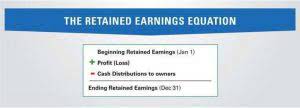
Regular reviews of financial http://www.seier-immobilien.de/bookkeeping/1800-bookkeeping-smb-payroll-tax-prep-2/ performance and adherence to credit terms help in early identification of potential problems, allowing for timely corrective actions. Before extending credit or making an investment, conducting a thorough assessment of the borrower’s or counterparty’s creditworthiness is essential. Imagine lending money to a friend with the agreement they’ll pay you back over a year with a little interest.
Financial risk analysis:
One way to approach environmental risk is by analyzing its potential impact on different industries and sectors. Understanding the specific risks related to these industries can help businesses develop strategies to mitigate them. Managing political/regulatory risk requires a combination of thorough research, diversification credit risk types of investments across different countries or industries, and staying informed about political developments.
- By having backup systems, emergency response plans, and alternative suppliers, businesses can minimize downtime and recover quickly from unexpected events.
- It involves identifying, measuring, monitoring, and controlling the credit exposures of different borrowers and portfolios.
- This includes banks, NBFCs, credit card companies, suppliers who sell goods on credit, and investors who buy bonds.
- The borrower’s creditworthiness cannot be evaluated accurately without the above information.
- This includes regular contact with the borrower and, if necessary, taking action to recover past-due payments.
Portfolio Risk Management

For example, diversifying investments across different asset classes can help mitigate the impact of interest rate fluctuations. Hedging using interest rate derivatives, such as interest rate swaps or futures contracts, can also provide protection against adverse interest rate movements. Interest rate risk can also have implications for businesses that rely heavily on borrowing. Higher interest rates can lead to increased borrowing costs, which can directly impact profitability and cash flow. Companies with high levels of debt or variable interest rate loans are particularly vulnerable to changes in interest rates, as they may face higher debt servicing costs. Diversification involves investing in a mix of assets or companies that are not closely correlated, meaning their performance does not move in tandem.

Credit Risks In Banks

Downgrade risk involves the risk that a borrower’s credit rating will be lowered, impacting the value of the borrower’s debt securities and potentially leading to financial losses for investors. For example, if a company you’ve invested How to Run Payroll for Restaurants in goes bankrupt and can’t pay its debts, as a bondholder, you might not get your expected payments. These credit risk examples highlight the inherent uncertainty in lending and the importance of assessing the borrower’s ability to repay their obligations. Default risk is the likelihood that a borrower will fail to repay a loan or meet other financial obligations.
- Agencies lowering or downgrading the rating can increase borrowing costs and potential losses for banks and financial institutions.
- Loans that prove to be high risk based on metrics should be assigned higher interest rates and or lower loan amounts.
- Furthermore, diversification of counterparts and exposure limits to any single counterparty can help manage and reduce counterparty risk.
- This makes managing credit risk a persistent challenge for lenders aiming to balance growth with financial stability.
- For example, suppose the credit spread for a BBB-rated corporate bond widens significantly.
Optimizing Loan Pricing
- In this article, we have discussed the definition of credit risk, the factors based on which credit risk is calculated, and a few ways to mitigate credit risk.
- When lenders offer mortgages, credit cards, or other types of loans, there is a risk that the borrower may not repay the loan.
- Another strategy is hedging, which involves taking positions that offset potential losses in a particular investment.
- Unlike the interest rate risk, spread risk arises from changes in credit perception.
- Companies that are seen as not supporting or opposing these movements may face reputational and financial risks.
Two important concepts in credit risk modeling are the probability of default (PD) and the loss given default (LGD). PD is the likelihood that a borrower will default on a loan, while LGD represents the portion of the loan that the lender expects to lose in the event of default. Risk identification is the process of recognizing potential risks that may affect an organization’s objectives, operations, or financial health. It involves systematically analyzing internal and external factors that could lead to losses or disruptions.



